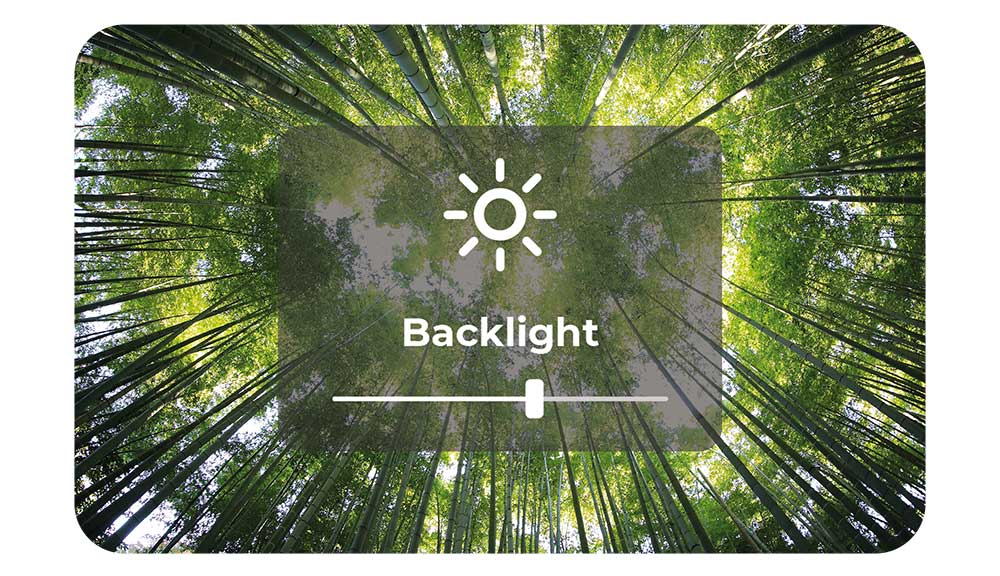With zebrix, let's talk about digital signage

What is digital signage?
Digital signage consists in using screens to display digital content in a dynamic, targeted way in public or private spaces. It differs from traditional displays (such as billboards or printed posters) in that content can be modified in real time. It also enables screens to be controlled remotely, and to act on a number of parameters such as lighting, brightness and backlighting. Digital signage generally consists of a screen or player connected to a content management solution (CMS). This is the case with zebrix, the solution published by the Manganelli group.
What are the objectives of digital signage?
Digital signage can be used for a wide variety of purposes, depending on the sector of activity, the target audience and the location. In practice, we find digital signage in retail outlets to promote products, in restaurants to present menus and prices, in businesses to inform employees, in transport to inform users about traffic, in cinemas or theaters to communicate about programming, or even in the healthcare sector to improve patient reception and orientation. Digital signage is increasingly used to promote or inform, and can now be found in all sectors of activity: retail, catering, leisure, health, transport, banking/insurance, industry, corporate, institutional, leisure and entertainment.

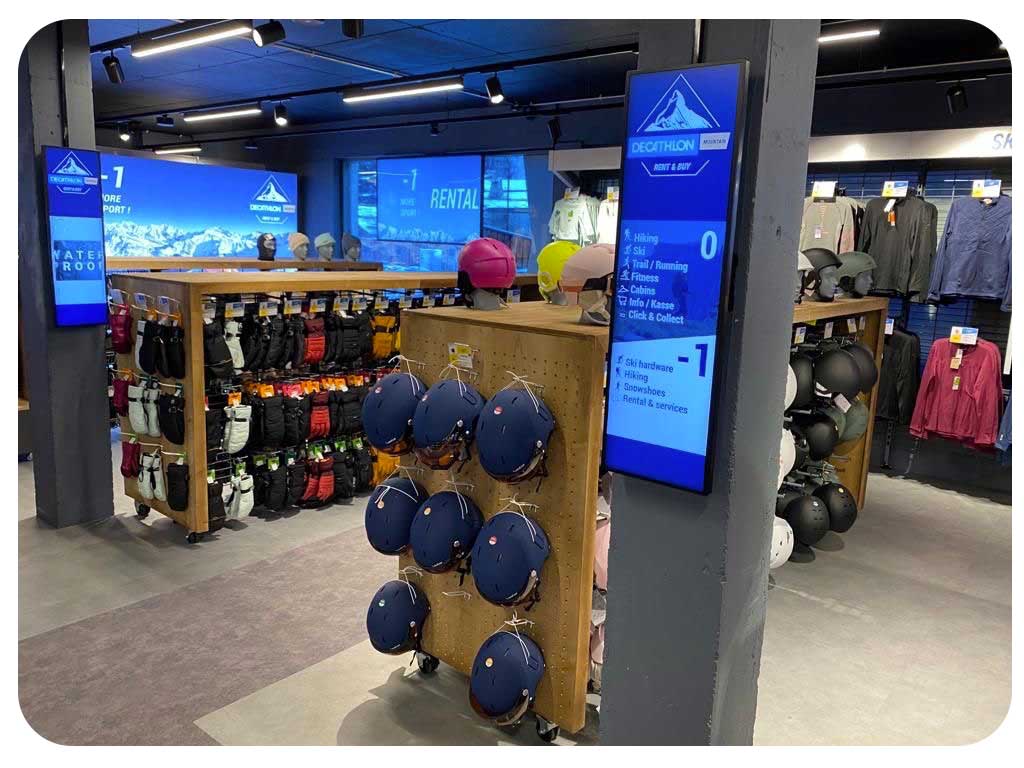
What types of digital content can be displayed using digital signage?
In terms of content, this will depend on the CMS we use. But as a general rule, you'll be able to distribute many types of media: images, videos, sounds, and even RSS feeds such as weather, horoscopes, traffic and news. With zebrix, you can distribute all this content. To do this, our CMS offers design tools that you don't need to know anything about to build pages with different zones for different types of content. At zebrix, we call this a multi-zone page. Thanks to this, you can display a product promotion, a price (which can be dynamic depending on the location of the point of sale), brand information, weather and even a news banner on the same screen. With zebrix, there are no limits to digital signage. These content pages can then be added to playlists and programmed according to time, calendar, location... and each of these parameters can be modified in real time and remotely, which obviously represents a particularly significant gain in productivity and performance.
What kind of screens do you use for digital signage?
Here again, the range is extremely varied, both in terms of size and technology. Many suppliers offer screens that can be used for digital signage. But beware, not all screen brands allow live connection to digital signage solutions, and it is sometimes necessary to add a compatible player that will receive the content and redistribute it on the screen. At zebrix, we have chosen to develop a solution that is perfectly compatible with Samsung screens. Thanks to a strong, long-term partnership, we've been able to develop a CMS that enables screens to be connected directly, without the need for a player, and to control a large number of hardware parameters remotely.
In a context of growing eco-responsibility, it's important to be able to remotely control switching times and screen brightness to optimize the consumption of digital signage devices. However, we also offer zebrix players optimized for our solution, for those who are already equipped with screens that are still functional, or for those who, due to internal policies, would have to choose other brands of non-compatible screens. This approach is also in line with our eco-responsible approach, which aims not to encourage the consumption of screens as long as they can still be connected to zebrix, either directly or via a player. We always aim to use screens as sustainably as possible.
Where to install a digital signage display?
The location of the screens can vary according to the objectives pursued. At Optic 2000, for example, there is usually a window screen to promote the major frame brands and current offers, as well as smaller counter screens. Each screen has its own function and broadcasts specific content according to its purpose. In supermarkets, screens are widely used and placed in many areas of the store. These include checkout screens, department screens, reception screens, window screens and giant outdoor screens in the parking lot. Depending on location and purpose, the choice of screen type will be based on size, panel type and weather resistance criteria if it's an outdoor screen.
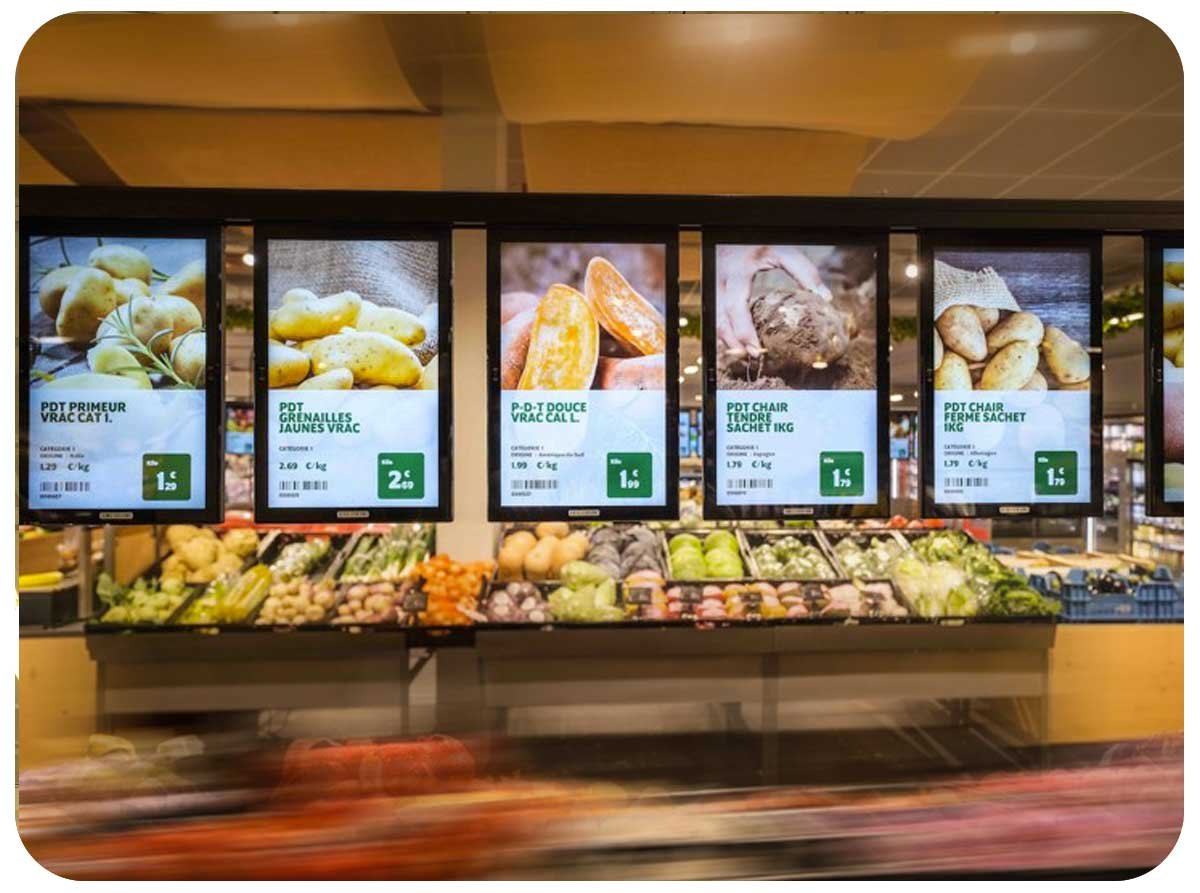

What software is used to display the content of digital signage screens?
To display digital signage content on one or more screens, you need dedicated software. In the age of the cloud and SaaS, it's no longer necessary to install the software locally; everything happens on your browser or via a mobile application. This is the case with zebrix. You can control your devices via the online solution and the application available on appstore and google playstore. This CMS allows you to create your content pages, make them dynamic according to different criteria (tags), create playlists and schedule their broadcast, control your network of screens and/or players, act on a number of hardware functions: lighting, switching on, firmware update, reboot - all remotely.
The case of digital signage in the fast-food sector
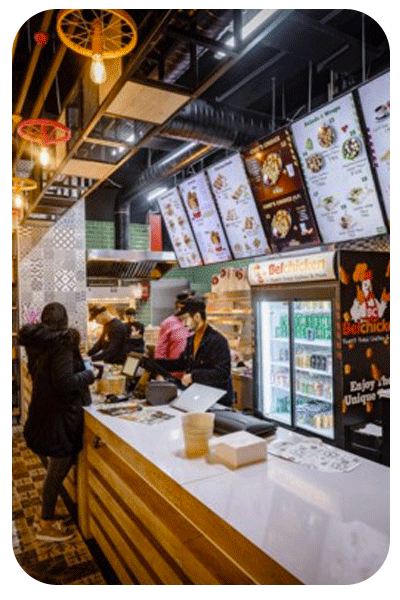

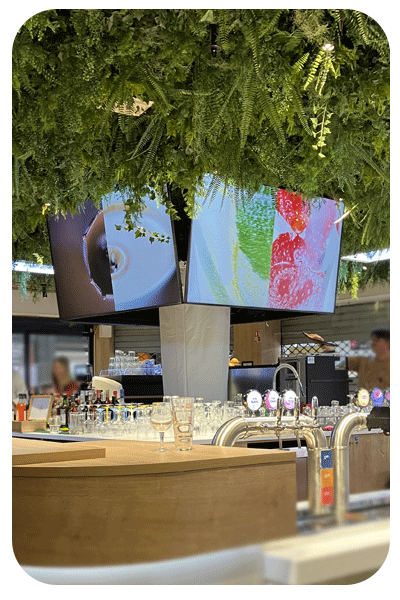
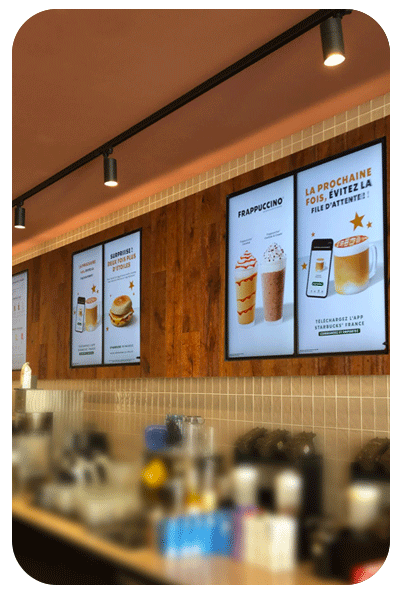
Digital signage goes eco-friendly
Long criticized for being polluting and energy-hungry, digital signage has come a long way, enabling brands to use it as part of an eco-responsible approach. Thanks to remote control of screens, it is possible to program their use and considerably reduce their energy consumption, in particular by programming switch-on times, brightness and screen backlighting. Putting a screen to sleep can reduce energy consumption by 80%. Displays are also evolving rapidly, with brands such as Samsung now offering screens that use far fewer raw materials, consume less energy and are more sustainable overall. The combination of solutions offering tools for optimizing energy consumption and new-generation, more environmentally-friendly screens is giving digital signage a new dimension.
